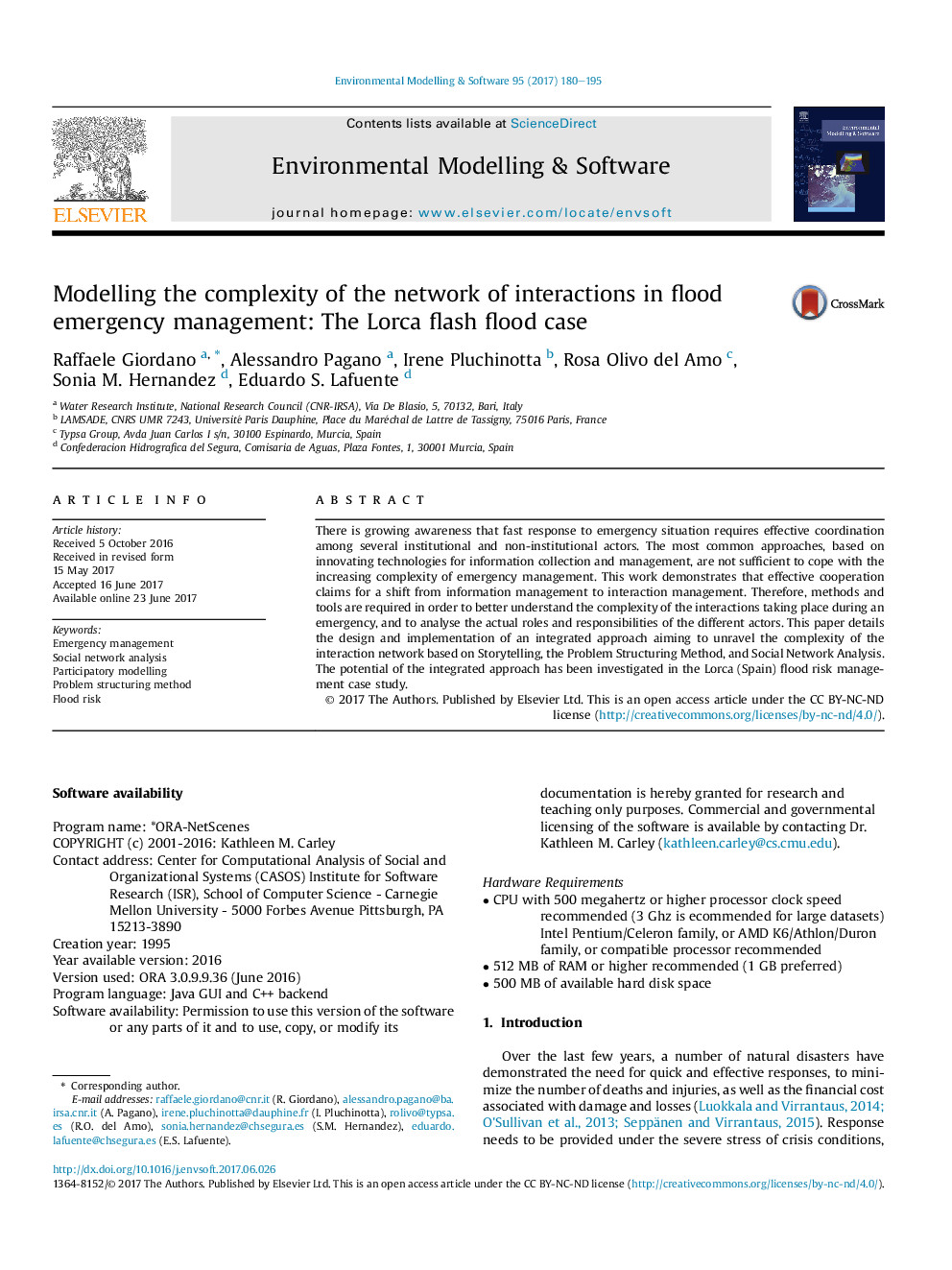| Article ID | Journal | Published Year | Pages | File Type |
|---|---|---|---|---|
| 4978118 | Environmental Modelling & Software | 2017 | 16 Pages |
â¢Dealing with the complexity of emergency management requires effective coordination among different actors.â¢The collaborative emergency management claims for methods capable to unravel the complexity of the network of interactions.â¢Integration among Problem Structuring Method and Social Network Analysis allows to unravel the complexity.â¢Analysis of the interactions network and graph theory measures for vulnerability assessment.â¢An application to the 2012 St. Wenceslas (Spain) flash flood case study is proposed.
There is growing awareness that fast response to emergency situation requires effective coordination among several institutional and non-institutional actors. The most common approaches, based on innovating technologies for information collection and management, are not sufficient to cope with the increasing complexity of emergency management. This work demonstrates that effective cooperation claims for a shift from information management to interaction management. Therefore, methods and tools are required in order to better understand the complexity of the interactions taking place during an emergency, and to analyse the actual roles and responsibilities of the different actors. This paper details the design and implementation of an integrated approach aiming to unravel the complexity of the interaction network based on Storytelling, the Problem Structuring Method, and Social Network Analysis. The potential of the integrated approach has been investigated in the Lorca (Spain) flood risk management case study.
